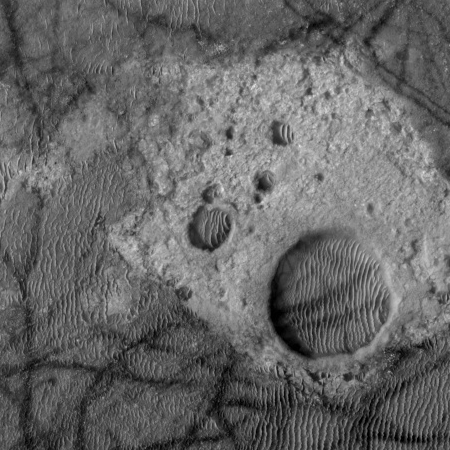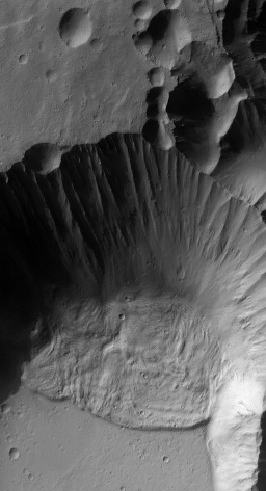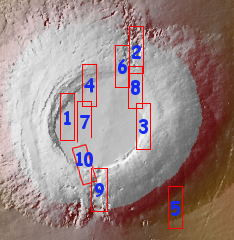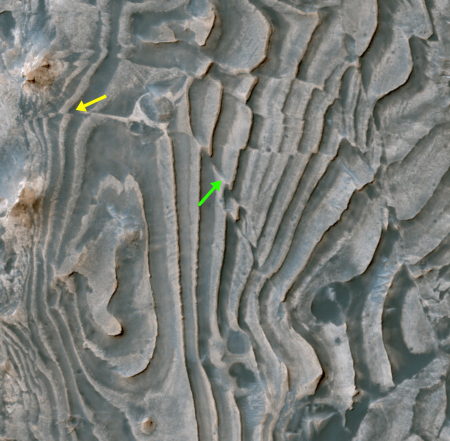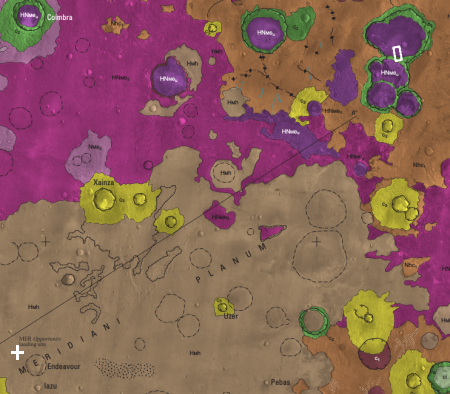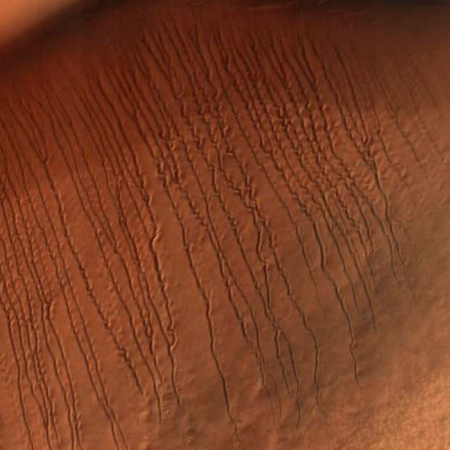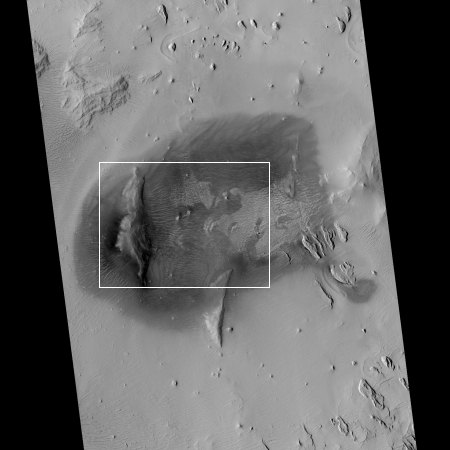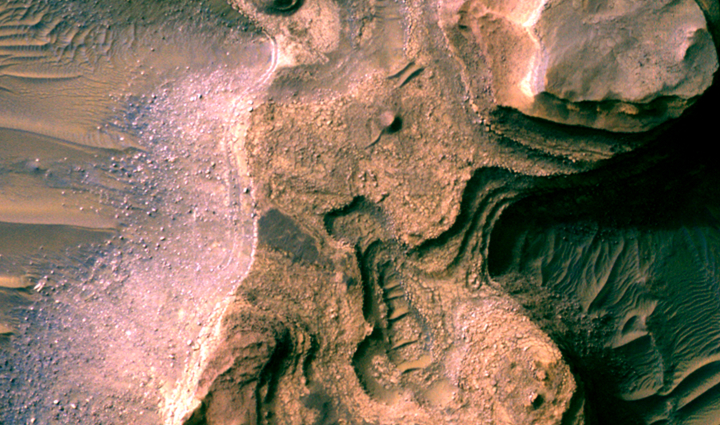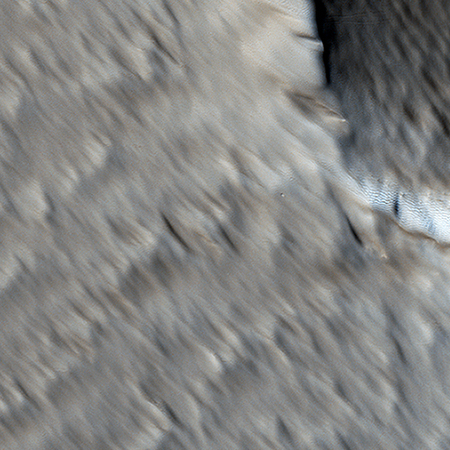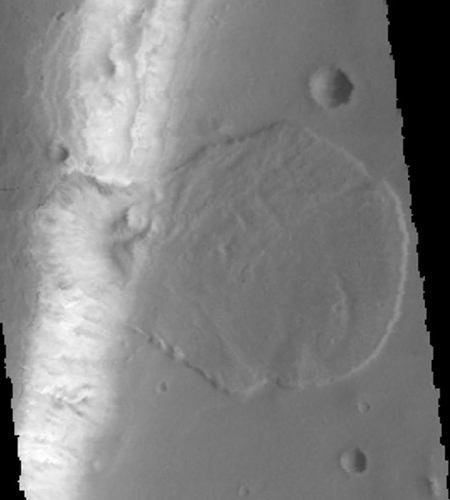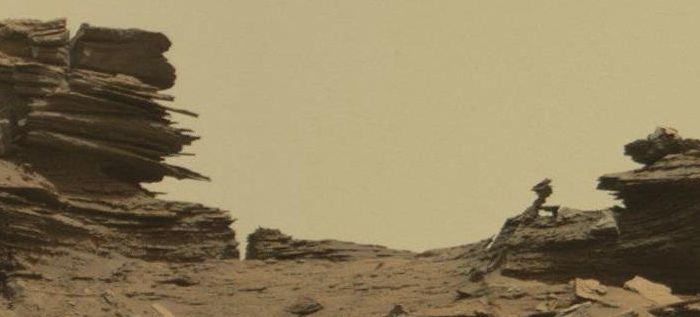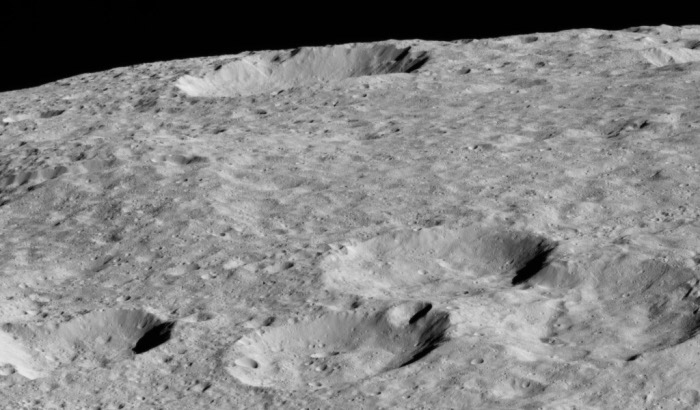New theory suggests Mars’ oceans formed earlier and intermittently
Scientists have proposed a new model for the existence of oceans on Mars’ northern plains that proposes they formed earlier, were shallower, were variable in size, and formed in conjunction with the eruptions that formed the planet’s giant volcanoes.
The proposal by UC Berkeley geophysicists links the existence of oceans early in Mars history to the rise of the solar system’s largest volcanic system, Tharsis, and highlights the key role played by global warming in allowing liquid water to exist on Mars. “Volcanoes may be important in creating the conditions for Mars to be wet,” said Michael Manga, a UC Berkeley professor of earth and planetary science and senior author of a paper appearing in Nature this week and posted online March 19.
…The new model proposes that the oceans formed before or at the same time as Mars’ largest volcanic feature, Tharsis, instead of after Tharsis formed 3.7 billion years ago. Because Tharsis was smaller at that time, it did not distort the planet as much as it did later, in particular the plains that cover most of the northern hemisphere and are the presumed ancient seabed. The absence of crustal deformation from Tharsis means the seas would have been shallower, holding about half the water of earlier estimates. “The assumption was that Tharsis formed quickly and early, rather than gradually, and that the oceans came later,” Manga said. “We’re saying that the oceans predate and accompany the lava outpourings that made Tharsis.”
Scientists have proposed a new model for the existence of oceans on Mars’ northern plains that proposes they formed earlier, were shallower, were variable in size, and formed in conjunction with the eruptions that formed the planet’s giant volcanoes.
The proposal by UC Berkeley geophysicists links the existence of oceans early in Mars history to the rise of the solar system’s largest volcanic system, Tharsis, and highlights the key role played by global warming in allowing liquid water to exist on Mars. “Volcanoes may be important in creating the conditions for Mars to be wet,” said Michael Manga, a UC Berkeley professor of earth and planetary science and senior author of a paper appearing in Nature this week and posted online March 19.
…The new model proposes that the oceans formed before or at the same time as Mars’ largest volcanic feature, Tharsis, instead of after Tharsis formed 3.7 billion years ago. Because Tharsis was smaller at that time, it did not distort the planet as much as it did later, in particular the plains that cover most of the northern hemisphere and are the presumed ancient seabed. The absence of crustal deformation from Tharsis means the seas would have been shallower, holding about half the water of earlier estimates. “The assumption was that Tharsis formed quickly and early, rather than gradually, and that the oceans came later,” Manga said. “We’re saying that the oceans predate and accompany the lava outpourings that made Tharsis.”


